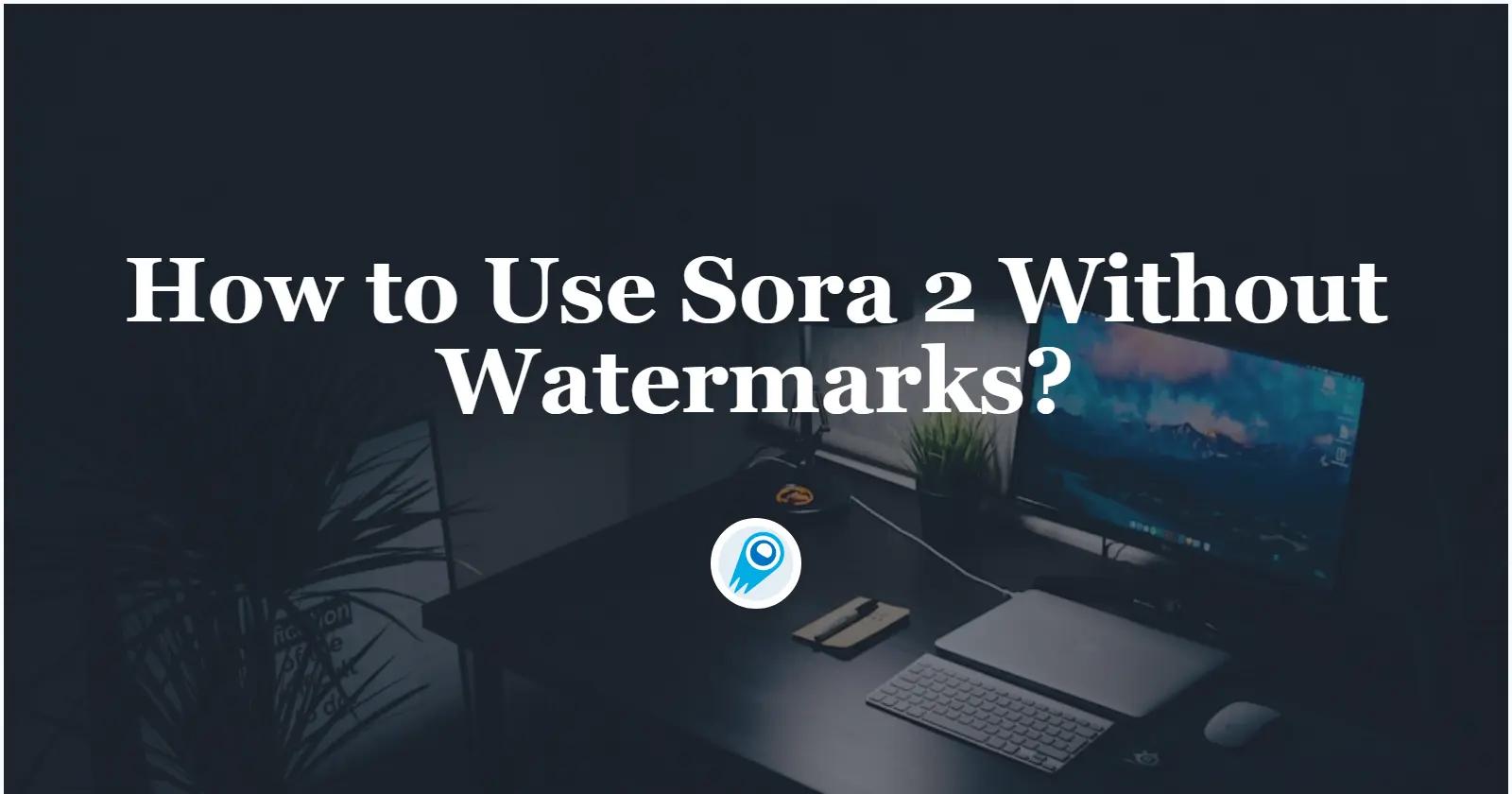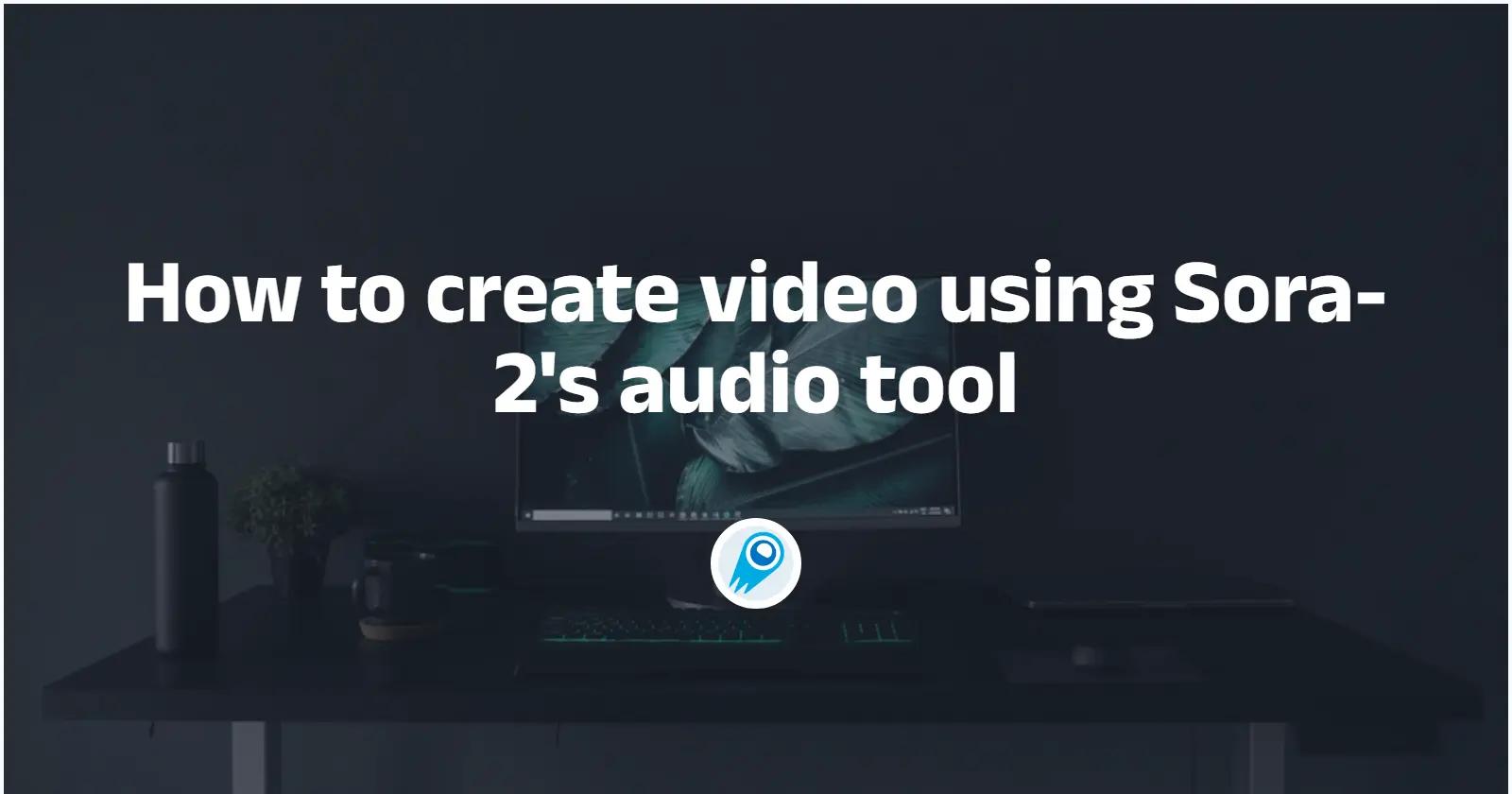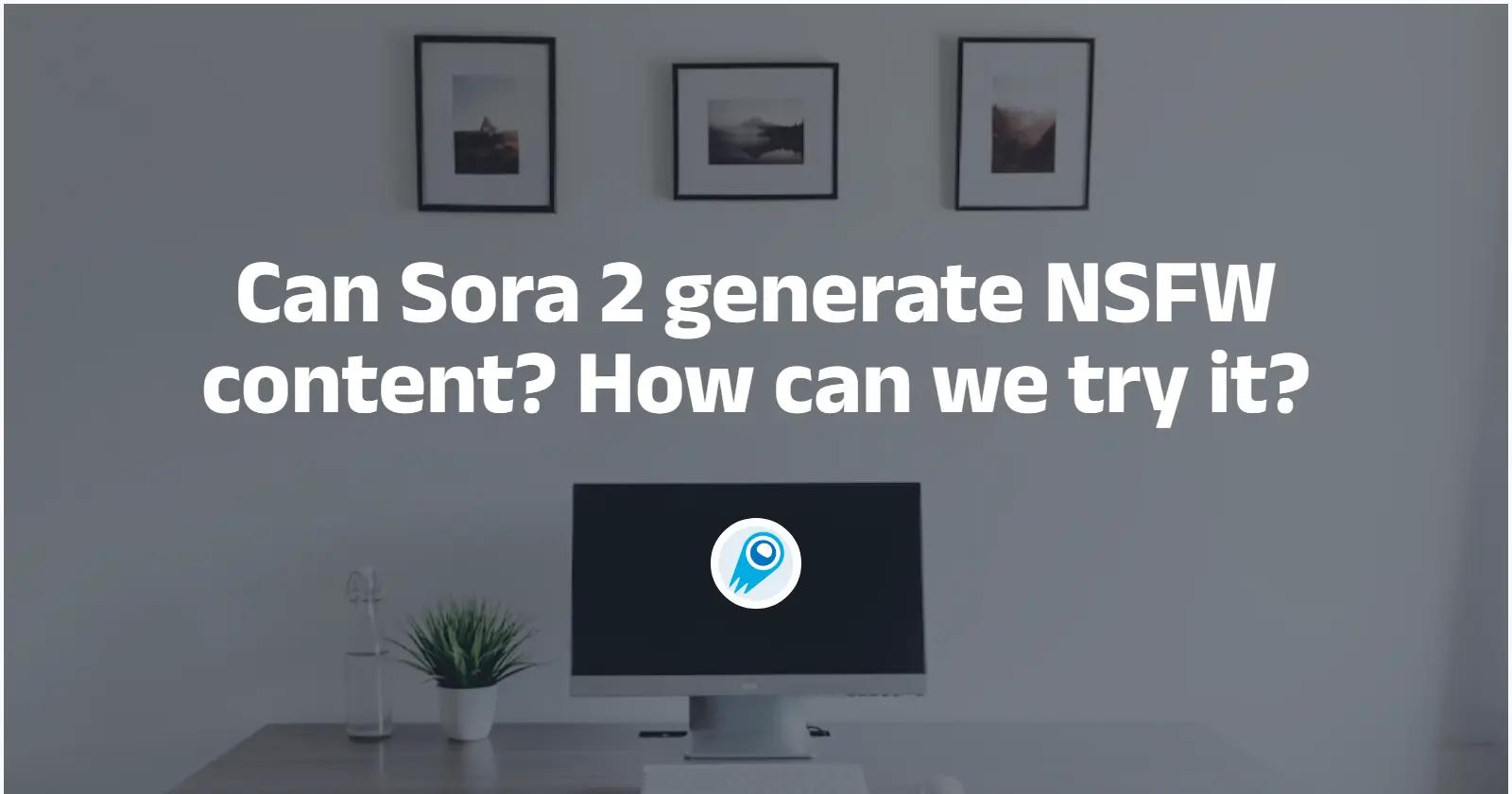OpenAI 的 Sora 2——其最新的視訊和音訊生成模型——於今年秋季發布,標誌著在逼真視訊生成和同步音訊方面取得了重大進展。從一開始,該產品架構就包含了可見的水印以及嵌入式來源元數據,旨在表明「這是 AI 生成的」。經過多次嘗試,我終於找到了一種可靠的方法,可以在不影響視訊品質或違反任何法規的情況下創建無浮水印影片。
避免視訊浮水印的最簡單方法是在整合了 Sora 2 API 的第三方平台上產生視頻,例如: 彗星API使用 CometAPI 產生的影片沒有浮水印,因此您無需手動移除浮水印,而且 API 呼叫價格僅為官方價格的 20%。此外,內容限制也更加寬鬆。
Sora 2 是什麼?
Sora 2 是 OpenAI 的第二代視訊和音訊生成模型,旨在產生具有同步語音、音效以及更高物理真實感和場景連貫性的短片,並營造電影般的視覺效果。它定位為一款可用於生產的文字轉視訊系統,提供多種保真度和性價比選擇(例如, sora-2 vs sora-2-pro該平台有兩種常見的消費模式:Sora 消費者應用程式(供最終用戶創建和分享短影片)和 Sora 2 API(供開發人員和工作室將程式化生成整合到流程中)。
Sora 2是如何分發給開發者的?
除了 OpenAI 自己的端點和 Sora 應用之外,許多第三方 API 整合商和平台封裝商(例如 CometAPI、Replicate 和其他 API 市場)已將 Sora 2 作為可用的模型公開,以便開發人員可以透過單一的統一 API 呼叫它,並將視訊生成整合到現有的工作流程中。
為什麼《索拉2》會帶有浮水印?
Sora 2 為輸出結果增加了哪些形式的溯源資訊?
OpenAI 特意在 Sora 2 的輸出中包含多個溯源訊號:
內部追溯工具 — OpenAI 維護反向影像和音訊搜尋系統,即使表面線索發生變化,也能將內容連結回 Sora。
可見的動態浮水印 在透過官方 Sora 應用程式和網站分發的影片上添加(幀上疊加層)。
不可見的來源元數據 (內容憑證/C2PA 元資料嵌入到文件中),它能夠經受多次轉換,旨在承載創建詳情和監管鏈。
為什麼要添加浮水印呢?
提供者為產生的媒體添加可見和不可見的來源資訊主要有三個原因:
- 透明度和信任: 水印可以向觀眾表明內容是合成的,這有助於限制濫用並降低虛假資訊的風險。
- 法醫可追溯性: 嵌入式溯源資訊(例如 C2PA 元資料和加密溯源資訊)支援溯源和審計,從而有助於下架、歸屬或版權執行。近期報告顯示,只有下游平台保留元數據,它才能發揮作用。
- 商業和許可管制。 水印機制可防止在OpenAI計畫實施付費或使用限制的場景下,未經授權免費重複使用高價值成果。 OpenAI的產品模型有意將浮水印與預設的存取等級和分發管道結合。
為什麼在《空之軌跡2》中移除物品在技術上比較困難?
C2PA是什麼?它如何改變遊戲規則?
C2PA(內容憑證/內容追溯與真實性聯盟)是一種行業標準,旨在承載關於媒體內容的加密可驗證元數據,包括創作工具和作者資訊。當提供者嵌入 C2PA 憑證或類似的加密簽章溯源資訊時,元資料即可被驗證,從而證明原始資訊未被竄改。故意設定了難度,使得在不破壞驗證的情況下移除或篡改這些元資料變得異常困難。
平台如何在外觀變化後仍能追蹤輸出結果?
主要採用兩種機制:
- 檔案級溯源(元資料 + 數位簽章): 如果影片中嵌入了簽名憑證,更改影片或其元資料通常會使簽名失效——從而可以檢測到篡改行為。
- 伺服器端錄製和哈希: 服務提供者會保留營運記錄(產生輸出的雜湊值、使用日誌、使用者 ID、時間戳記),因此即使可見的浮水印被變更或移除,內部記錄仍可用於追溯輸出的來源。公開調查顯示,許多社群平台未能保留或公開這些元數據,但底層功能掌握在內容創作者和服務提供者手中。
- 由於這些機制,溯源是分層的:可見的、嵌入式的和伺服器端的-移除其中一層通常不會影響其他層的完整性。
為什麼還有一些「去除浮水印」工具仍然存在?
市面上湧現許多聲稱可以「去除Sora 2水印」的工具和服務。其中大多數都作用於可見的疊加層(影像修復、幀感知重建)。雖然有些工具能夠產生視覺上逼真的效果,但它們幾乎從未真正清除嵌入的來源元資料。
目前,利用工具去除浮水印的方法主要有兩種:第三方浮水印工具和基於人工智慧的逐幀視訊修復。然而,由於OpenAI強大的浮水印技術,這兩種方法都並非完美無缺,在視訊品質和成功率方面都存在局限性。
Sora 2 水印去除方案對比
第三方浮水印工具(修復/修補)
- 他們是如何工作的: 偵測每個畫面的疊加區域,並進行修復或複製背景以隱藏徽標。
- 優點: 通常速度快,有時免費或價格低廉,適合非商業性的概念驗證。
- 缺點: 可能會留下瑕疵(尤其是在移動的疊加層上),破壞運動的連續性,以及 可能違反 提供者條款。不同場景的品質差異很大。雖然存在一些服務(例如 Apify actor、Kie.ai 等),但它們並非官方服務,隨時可能關閉。
AI影片修復/深度修復技術
- 他們是如何工作的: 跨多幀的運動追蹤 + 神經影像修復(更好的時間連貫性)。
- 優點: 比簡單的逐幀修復品質更高;運動偽影更少。
- 缺點: 價格較高,但仍有損壓縮,在處理複雜背景和動態疊加層時可能會失敗。不會修改嵌入式來源元資料。適用於非商業用途的自有影片片段清理。
API 直接/授權匯出(建議方式)
- 運作方式: 請求模型提供者根據允許無浮水印輸出的計劃產生或匯出模型;提供者返回乾淨的資產,並可選擇性地傳回指示許可的簽章來源元資料。
- 優點: 無損、受支援、符合供應商政策、最高品質、可追溯和可審計。
- 缺點: 需要具備一定的技術開發知識和對 API 使用技巧的理解。
常用水印去除工具簡介
以下是我試用過的幾款熱門去浮水印工具的比較表格。每款工具對產生的影片都有各自的優缺點,價格也各不相同。經過比較,我最終選擇了 CometAPI 的工具。 Sora 2 API Sora-2-pro API因此,我無需額外支付去除浮水印的費用。此外,CometAPI 還提供了 OpenAI 價格的 80% 折扣,比我預期的還要省錢。
對照表:
| 工具 | 類型 | 產品特色 | 優點 | 缺點 | 定價 |
|---|---|---|---|---|---|
| Adobe Premiere Pro中 | 桌面軟件 | 手動遮罩、內容感知填充、逐幀編輯、與其他 Adobe 工具集成 | 精準控制,輕鬆完成複雜移除操作,獲得專業級效果,相容於完整的視訊工作流程 | 學習曲線陡峭,資源消耗大,僅限訂閱用戶使用 | 單一應用程式:每月 31.99 美元;所有應用程式:每月 54.99 美元 |
| Media.io 水印去除器 | 線上(基於瀏覽器) | AI自動去除浮水印,多選移動浮水印,快速上傳 | 無需安裝,觸控操作友好,適合快速編輯 | 依賴網絡,免費套餐有限制(大小/浮水印),不支援 4K,有隱私問題 | 免費版(720p,功能受限);高級版:每月 14.99 美元或每年 59.99 美元 |
| Wondershare Filmora | 桌面軟件 | AI浮水印去除功能整合於完整的編輯套件和特效庫中 | 集編輯與刪除功能於一體,易於上手,短影片播放穩定。 | 對於複雜的浮水印處理較不可靠,偶爾會出現匯出問題,與 Pro Tools 相比功能較為基礎。 | 年費:49.99 美元/年;永久費:一次性支付 79.99 美元;專業版:155.88 美元/年 |
| Remove.bg 視頻 | 線上(人工智慧專業) | 逐幀去除標誌,重點去除邊緣清晰的水印 | 快速製作簡單logo,按積分彈性計費,適合當背景。 | 純AI生成(無人工調整),對文字/複雜水印的處理效果不穩定 | 按次付費:200秒9美元;1,000秒39美元 |
| 達芬奇解決 | 桌面軟件 | 手動遮罩、物件追蹤、高品質移除工具 | 免費完整版,專業精準度,非常適合行動浮水印,社群支持 | 學習曲線陡峭,硬體需求高,工作流程多步驟 | 免費;工作室版本:一次性支付 295 美元 |
Sora 2 無浮水印生成解決方案
1) 使用 CometAPI API
在 Global GPT 等平台上,我可以以極低的成本直接產生無浮水印的 Sora 2 影片。 CometAPI 為 Sora2 提供了三個介面:sora-2-pro、sora-2-hd 和 sora-2。 sora-2-pro 可以產生多種尺寸的無浮水印、更高品質的影片。其他兩個介面則提供了最佳的性價比,例如 CometAPI 中的 sora-2-pro:
| 方向 | 解析度 | 價格 |
|---|---|---|
| 肖像 | 720×1280 | 0.30 美元/秒 |
| 風景 | 1280×720 | 0.30 美元/秒 |
| 肖像 | 1024×1792 | 0.50 美元/秒 |
| 風景 | 1792×1024 | 0.50 美元/秒 |
或者,您可以使用提示讓 Sora2 生成無水印視頻,但成功率無法保證,並且需要一定的訓練時間,例如:
curl -X POST "https://api.cometapi.com/v1/videos" \
-H "Authorization: Bearer $COMETAPI_KEY" \
-H "Content-Type: application/json" \
-d '{
"model":"sora-2",
"input": {"type":"text", "prompt":"City skyline at dusk, animated."},
"options":{"download_without_watermark":true, "duration_seconds":8},
"output_format":"mp4"
}'
API 請求/使用工作流程(建立 → 輪詢 → 下載),目前 CometAPI 提供以下端口 製作影片 , 混音影片, 檢索影片, 刪除影片, 取得影片內容去除浮水印成功率最高的連接埠是 CometAPI 聊天格式。
2) 升級到 ChatGPT 專業版
OpenAI宣布取消其AI影片產生工具Sora2的邀請碼限制,正式向美國、加拿大、日本和韓國的用戶開放下載。不過,未來不排除重新啟用邀請碼限制的可能性。
您需要滿足以下幾個前提條件:
- 您可能需要取得 Sora 2 邀請碼
- 支付 200 美元的專業版訂閱費
- 僅限網頁和iOS平台
目前,圖片類影片仍附有浮水印,而文字類影片則不再帶有浮水印。因此,訂閱前您應該考慮費用和您的具體需求。
3)接受水印,但巧妙地避開它進行設計(創意的變通方法)
如果商業授權不可用或成本過高,還有一些編輯方法既能讓你遵守規則,又能最大限度地減少影響:
- 創作構圖時,讓浮水印落在信箱邊框、黑邊或細邊內,這樣就不會影響關鍵的畫面構圖。
- 使用多圖層編輯:將 Sora 片段作為插入片段加入,進行遮罩或風格化處理,使其成為有意的“合成”元素(標題卡、轉場),而不是試圖抹去其來源。
- 複合圖形或下三分之一區域故意包含水印區域(例如,將品牌下三分之一區域放置在水印上)——同樣,這不會消除出處,也不應被視為“掩蓋”出處以進行欺騙性用途的方法。
這些做法既能保持影像完整性,又能降低水印的侵入性;它們確實如此。 不會 移除不可見的來源資訊。 (這是一種便於合規的做法,受到許多新聞編輯室和工作室的青睞。)
4)如果您絕對必須使用官方方法。
舊款 Sora 1 機型可以透過 Pro 方案下載無浮水印版本。 Sora 2 API 目前 Sora 尚無官方的去浮水印功能。如果您對無浮水印輸出和視訊品質要求較高,建議您使用舊版本的 Sora。但是,如果您已經訂閱了 ChatGPT Pro,並且是 ChatGPT 生態系統的重度用戶,那麼回退到舊版本也是一個不錯的選擇。
底線
Sora 2 功能強大,其設計充分考慮了溯源性:可見水印、嵌入式 C2PA 元資料和內部追蹤系統都是精心設計的安全功能。如果您需要用於合法商業用途的無浮水印輸出,最安全可靠的途徑是採用商業/專業/企業級合作模式——無論是直接透過 OpenAI,還是透過 CometAPI 等信譽良好的轉售或代理網關。第三方工具和 AI 修復有時可用於實驗,但並不能始終保證輸出完美無瑕。
如何進入 Sora-2-pro API API
CometAPI 是一個統一的 API 平台,它將來自領先供應商(例如 OpenAI 的 GPT 系列、Google 的 Gemini、Anthropic 的 Claude、Midjourney、Suno 等)的 500 多個 AI 模型聚合到一個開發者友好的介面中。透過提供一致的身份驗證、請求格式和回應處理,CometAPI 顯著簡化了將 AI 功能整合到您的應用程式中的過程。無論您是建立聊天機器人、影像產生器、音樂作曲家,還是資料驅動的分析流程,CometAPI 都能讓您更快地迭代、控製成本,並保持與供應商的兼容性——同時也能充分利用整個 AI 生態系統的最新突破。
開發人員可以訪問 Sora-2-pro API Sora 2 API 透過 CometAPI, 最新型號版本 始終與官方網站同步更新。首先,探索該模型的功能 游乐场 並諮詢 API指南 以獲得詳細說明。造訪前請確保您已經登入CometAPI並取得API金鑰。 彗星API 提供遠低於官方價格的價格,幫助您整合。
準備出發了嗎? → 立即註冊 CometAPI !
如果您想了解更多有關 AI 的提示、指南和新聞,請關注我們 VK, X 不和!
關於《空之軌跡2》浮水印的常見問題
去除可見浮水印是否能使影片「無法追蹤」?
不——這一點至關重要。移除可見的覆蓋層並不一定能移除嵌入的C2PA元資料或內部痕跡。調查顯示,即使移除了可見的來源訊息,元數據或平台行為仍然可以揭示內容的來源;一些平台在上傳內容時也會移除或忽略元數據,但這只會使歸屬更加複雜,而無法消除來源資訊。簡而言之:移除可見的覆蓋層只是治標不治本;可靠的來源資訊仍然可以保留。
你能在官方 API 中撥動一個「開關」嗎?
不一定。 OpenAI 在發布 Sora 2 時就明確地加入了可見水印和嵌入式溯源資訊;在許多情況下,水印行為與產品層級、分發管道和安全策略相關,而不是一個所有用戶都可以使用的簡單布林參數。獲得無水印輸出的官方途徑通常是… 商業/專業/企業級 明確承諾無水印交付。
Sora 2 如何處理肖像權與「客串」功能與浮水印之間的關係?
簡短的回答: Sora 的「客串」/肖像功能需要經過使用者同意流程並設有策略控制;來源/浮水印系統旨在確保所產生肖像的使用獲得使用者同意並可追溯。請求類似客串的輸出可能需要額外的審核和限制。



